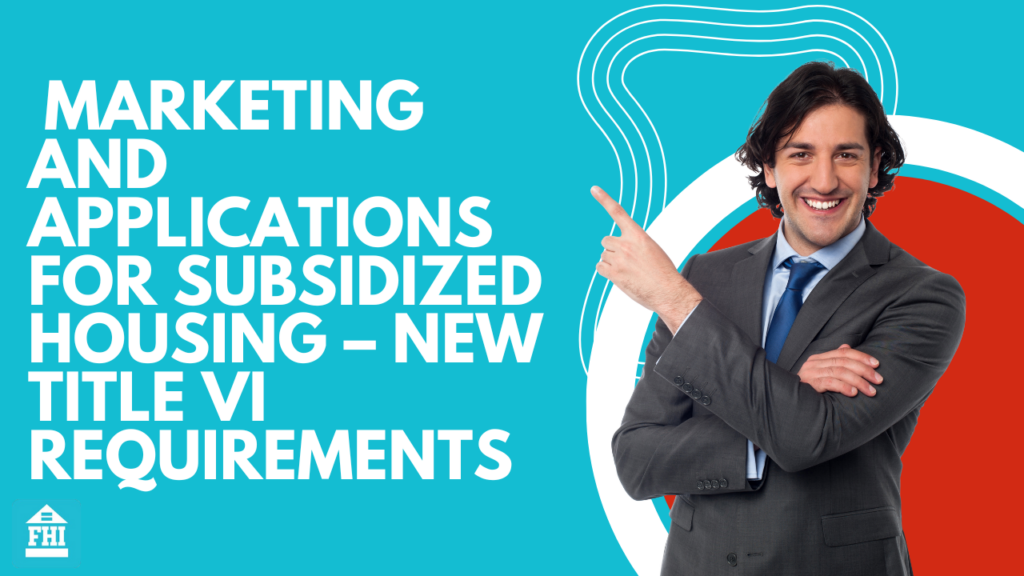Do you know what Title VI is? Or how it affects the way a property is marketed or its application process? Leslie from Williams, Edelstein, and Tucker P.C. sits down with us to discuss the new notice and what it means for subsidized housing.
Estimated reading time: 4 minutes

Table of contents
- What is Title VI?
- How can your marketing and application procedure negatively impact certain groups of people?
- What are some effective vs. not effective marketing methods?
- What are some effective vs. not effective application procedures?
- What are some best practices that HUD recommends in order to give more people the opportunity to be housed?
What is Title VI?
Title VI of The Civil Rights Act prohibits discrimination based on three protected categories, race, color, and origin. From a housing standpoint, what that means is that someone cannot be denied housing in a federally-funded property because of these three categories. In addition, they cannot be provided a different level of service or benefits or be presented with a disadvantage or barrier to learning about housing based on these three categories.
HUD’s notice does not apply to conventional properties but focuses on properties that receive federal funds.
How can your marketing and application procedure negatively impact certain groups of people?
The reason why HUD issued this notice is that they were beginning to see a problematic trend of insufficient marketing. HUD found that housing providers were not making enough of an effort to reach out to their market to ensure that all racial groups had access to, and understanding of, their housing options.
This was especially the case in larger market areas. For example, larger cities or counties focused on the market in their direct neighborhoods. They focused on one demographic, which led to the exclusion of the other outlying demographics.
What are some effective vs. not effective marketing methods?
HUD has actually taken the guesswork out of marketing methods by laying out specific examples within the notice of what they feel qualifies as effective vs. not effective marketing methods. A brief example of how they have broken it down looks like this:
Not Effective
- Word of mouth
- Community organizations that are located in the local area or that serve a limited demographic
- ‘For rent’ signs placed only on the property
Effective
- Community organizations that are further away from the property and serve at least one or two different demographics
- Placing ads on the radio, newspaper, or social media to reach a larger audience
- Ads in public places
- The property website is updated regularly to show availability, eligibility, and provide access to the application process.
What are some effective vs. not effective application procedures?
Again these suggestions came directly from HUD. In their opinion, only handing out paper copies created a barrier in larger market areas, especially if the leasing office operates under limited hours.
A better practice would be to have your application available on your website so that anyone can access it. Along with that, having a way for the prospect to be able to submit their application electronically. If that is not possible with your current setup, then having a drop box available removes any barriers for an applicant to submit the needed information.
What are some best practices that HUD recommends in order to give more people the opportunity to be housed?
The top two best practices to help ensure that more people have the opportunity to be housed at your property are as follows:
- Make sure all your property’s information, including availability and application process, is readily available in as many formats as possible.
- Periodically assess your waitlist and the demographics of who is currently living on your property. This will clearly indicate if your marketing efforts are reaching a widespread and diverse audience.
In conclusion, even though the notice regarding Title VI is directed at federally funded properties, every type of property, regardless of funding, should review its marketing and application procedures to ensure they are inclusive and fair housing friendly.
[fusebox_transcript]
You May Also Like:
